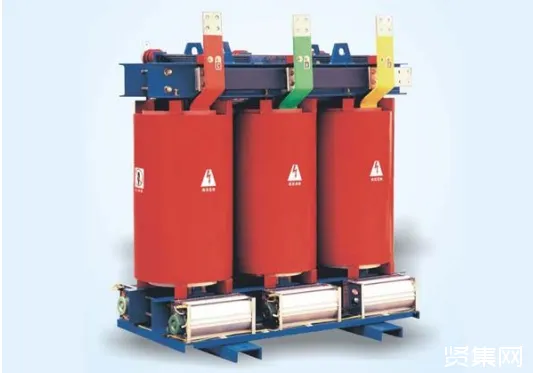Jiangsu Shenyun Electrical Parts Plant!

21
2025
-
05
Structure, cooling method, installation and commissioning of dry-type transformers
Currently, most dry-type power transformers in China are three-phase solid-molded SC series, such as: SCB9 series three-phase winding transformers, SCB10 series three-phase foil transformers, and SCB9 series three-phase foil transformers. Their voltage levels are generally within the range of 6-35KV, and the maximum capacity can reach 25MVA. For dry-type transformers, are you interested in learning more? Below, the editor of Xianji.com will provide a detailed introduction to the structural forms, cooling methods, types of dry-type transformers, and their advantages compared to oil-immersed transformers; installation and commissioning; how to judge faults from sound; noise caused by external structures and solutions; and selection points. Let's take a look!

■ Structural Forms of Dry-Type Transformers
1. Open Type: This is a commonly used form, where the transformer body is in direct contact with the atmosphere. It is suitable for relatively dry and clean indoor environments (at an ambient temperature of 20 degrees, the relative humidity should not exceed 85%). Generally, there are two cooling methods: air natural cooling and air forced cooling.
2. Enclosed Type: The transformer body is enclosed in a sealed shell and is not in direct contact with the atmosphere (due to sealing and poor heat dissipation conditions, it is mainly used in mines and is explosion-proof).
3. Cast Resin Type: Epoxy resin or other resins are used for casting as the main insulation. It has a simple structure and small size and is suitable for transformers with smaller capacities.
■ Cooling Methods of Dry-Type Transformers
Dry-type transformers are cooled by natural air cooling (AN) and forced air cooling (AF). With natural air cooling, the transformer can operate continuously at rated capacity for extended periods. With forced air cooling, the transformer's output capacity can be increased by 50%. It is suitable for intermittent overload operation or emergency overload operation; however, since the load loss and impedance voltage increase significantly during overload, it is in a non-economic operating state and should not be allowed to operate continuously under overload for extended periods.
■ Types of Dry-Type Transformers
1. Impregnated Air-Insulated Dry-Type Transformers: Currently rarely used. Winding wire insulation and insulation structural materials use insulation materials of different heat resistance grades as needed to produce B-class, F-class, and H-class insulated dry-type transformers.
2. Epoxy Resin Cast Dry-Type Transformers: The insulation materials used include polyester resin and epoxy resin. Currently, epoxy resin is mostly used for cast insulation dry-type power transformers.
3. Winding-Wrapped Insulated Dry-Type Transformers: Winding-wrapped insulated dry-type transformers are also a type of resin insulation, and currently, there are fewer manufacturers.
4. Composite Insulated Dry-Type Transformers:
(1) The high-voltage winding uses a cast resin type, and the low-voltage winding uses impregnated insulation;
(2) The high-voltage winding uses a cast resin type, and the low-voltage winding uses a foil winding made of copper foil or aluminum foil.
■ Advantages of Dry-Type Transformers Compared to Oil-Immersed Transformers
1. Dry-type power transformers can avoid the risk of fire and explosion caused by transformer oil in case of faults during operation. Since the insulation materials of dry-type transformers are all flame-retardant materials, even if a fault occurs during operation that causes a fire or there is an external fire source, it will not cause the fire to spread.
2. Dry-type power transformers do not have oil leakage problems like oil-immersed transformers, nor do they have problems such as transformer oil aging. Generally, the operation, maintenance, and repair work of dry-type power transformers are greatly reduced, and they may even be maintenance-free.
3. Dry-type power transformers are generally indoor devices, and they can also be made into outdoor types for special requirements. They can be installed in the same room as switchgear, reducing the installation area.
4. Because dry-type power transformers are oil-free, they also have fewer accessories, no oil tanks, safety vents, and numerous valves, and no sealing problems.
■ Installation and Commissioning of Dry-Type Transformers
1. Pre-Installation Inspection
Check if the packaging is intact. After unpacking the transformer, verify that the transformer nameplate data meets the design requirements, that the factory documents are complete, that the transformer is intact, that there are no signs of external damage, that the components have not shifted or been damaged, that the electrical support components or connecting wires are not damaged, and finally, verify that the spare parts are not damaged or missing.
2. Transformer Installation
First, check the transformer foundation. Check if the embedded steel plate is level, and there should be no cavities under the steel plate to ensure that the transformer foundation has good seismic resistance and sound absorption performance; otherwise, the noise of the installed transformer will increase. Then, use rollers to move the transformer to the installation position, remove the rollers, accurately adjust the transformer to the design position, and ensure that the installation level error meets the design requirements. Finally, weld four short channel steels close to the four corners of the transformer base, that is, on the embedded steel plate, to prevent the transformer from moving during use.
3. Transformer Wiring
During wiring, ensure the minimum distance between live parts and between live parts and ground, especially the distance from the cable to the high-voltage coil. The high-current low-voltage busbars should be supported separately and should not be directly connected to the transformer terminals to prevent excessive mechanical tension and torque. When the current is greater than 1000A (such as the 2000A low-voltage busbar used in this project), there must be a soft connection between the busbar and the transformer terminals to compensate for the thermal expansion and contraction of the conductor and isolate the vibration of the busbar and the transformer. The electrical connections at each connection point must maintain the necessary contact pressure. Elastic elements (such as disc-type plastic rings or spring washers) should be used. When tightening the connecting bolts, a torque wrench should be used. The torque reference values provided by the manufacturer are shown in Table 1.

4. Transformer Grounding
The grounding point of the transformer is on the base on the low-voltage side, and a dedicated grounding bolt is provided, marked with a grounding symbol. The transformer must be reliably connected to the grounding system through this point. If the transformer has a shell, the shell should be reliably connected to the grounding system. When a three-phase four-wire system is used on the low-voltage side, the neutral line should be reliably connected to the grounding system.
5. Pre-Operation Inspection of the Transformer
Check all fasteners for looseness, ensure that electrical connections are correct and reliable, and that the insulation distances between live parts and between live parts and ground meet the regulations. There should be no foreign objects near the transformer, and the coil surface should be cleaned.
6. Transformer Pre-operation Debugging
(1) Check the transformer's turns ratio and connection group, measure the DC resistance of the high and low voltage windings, and compare the results with the factory test data provided by the manufacturer.
(2) Check the insulation resistance between coils and between coils and ground. If the insulation resistance is significantly lower than the factory measurement data, it indicates that the transformer is damp. If the insulation resistance is below 1000Ω/V (operating voltage), the transformer must be dried.
(3) The test voltage for the withstand voltage test should meet the regulations. When performing the low-voltage withstand voltage test, the temperature sensor TP100 should be removed, and the sensor should be returned to its position after the test.
(4) If the transformer is equipped with a fan, the fan should be energized and its operation ensured.
7. Trial Run
After careful inspection before putting the transformer into operation, it can be energized for a trial run. During the trial run, the following points must be checked carefully: Any unusual sounds, noise, and vibration. Any unusual odors such as burning smell. Any discoloration caused by local overheating. Whether ventilation is good. In addition, the following points should also be noted.
First, although dry-type transformers are highly moisture-resistant, because they are generally open-type structures, they are still susceptible to moisture, especially since the insulation level of dry-type transformers produced in China is relatively low (lower insulation level). Therefore, dry-type transformers can only achieve higher reliability when operating below 70% relative humidity. Dry-type transformers should also avoid long-term shutdown to prevent serious moisture absorption. When the insulation resistance is below 1000/V (operating voltage), it indicates that the transformer is seriously damp, and the trial run should be stopped.
Second, dry-type transformers used for power plant step-up are different from oil-immersed transformers. Open-circuit operation on the low-voltage side is prohibited to prevent the insulation of the dry-type transformer from being broken down due to overvoltage on the grid side or lightning strikes on the line, resulting in the transmission of overvoltage. To prevent the hazards of transmitted overvoltage, a set of overvoltage protection arresters (such as Y5CS zinc oxide arresters) should be installed on the voltage bus side of the dry-type transformer.
■ How to Judge Faults from the Sound of a Dry-Type Transformer
1. Sound during Phase Loss
When the transformer experiences phase loss, if the second phase is not connected, there is no sound when the second phase is sent, and there is a sound only when the third phase is sent; if the third phase is not connected, the sound does not change, the same as with two phases. There are roughly three reasons for phase loss:
① One phase of the power supply is missing;
② One phase of the high-voltage fuse of the transformer is blown;
③ Due to careless transportation, coupled with thin high-voltage leads, the transformer vibrates and the wire breaks (but is not grounded).
2. Tap Changer Not in Place or Poor Contact
When the transformer is put into operation, if the tap changer is not in place, it will make a loud "chirping" sound, and in severe cases, it will cause the high-voltage fuse to blow; if the tap changer has poor contact, it will produce a slight "creaking" sound of arcing. Once the load increases, the tap changer contacts may be burned. In this case, power should be cut off for repair.
3. Foreign Objects Falling In and Loose Through Bolts
When the through bolts clamping the transformer core are loose, there are nut parts left on the core, or small metal objects fall into the transformer, the transformer will make a "clinking" knocking sound or a "whooshing" sound like wind, as well as a "scraping" sound like a magnet attracting small pads, while the voltage, current, and temperature of the transformer are normal. Such situations generally do not affect the normal operation of the transformer and can be handled during power outages.
4. Dirty or Damaged High-Voltage Bushings
When the high-voltage bushings of the transformer are dirty, the surface glaze is peeled off or damaged, surface flashover will occur, and a "hissing" or "sizzling" sound will be heard. Sparks can be seen at night.
5. Transformer Core Grounding Wire Disconnected
When the transformer core grounding wire is disconnected, the transformer will produce a slight "crackling" discharge sound.
6. Internal Discharge
When energized, a crisp "crackling" sound of striking iron is heard, which is the discharge sound of the conductive lead wire to the transformer casing through the air; if a dull "crackling" sound through the liquid is heard, it is the discharge sound of the conductor to the casing through the transformer oil. If the insulation distance is insufficient, the core should be inspected after power failure, the insulation should be strengthened, or insulation baffles should be added.
7. External Line Break or Short Circuit
When the line breaks at the connection point or T-connection of the wire, it intermittently connects during windy weather, and arcing or sparks occur when it contacts, the transformer will make a sound like a frog's "croaking"; when a ground fault or short circuit occurs in the low-voltage line, the transformer will make a "rumbling" sound; if the short circuit point is close, the transformer will make a sound like a tiger's roar.
8. Transformer Overload
When the transformer is severely overloaded, it will emit a low, humming sound like a heavily loaded aircraft.
9. Overvoltage
When the power supply voltage is too high, the transformer will be over-excited, and the sound will increase and become sharper.
10. Winding Short Circuit
When the transformer winding has an inter-layer or turn-to-turn short circuit and burns out, the transformer will emit a "gurgling" sound like boiling water.
■ Noise Caused by the External Structure of the Dry-Type Transformer and Solutions
Dry-type transformers generally have a fan cooling system, and abnormal noise from dry-type transformers is often caused by malfunctions in the fan system. The fan mainly has the following three types of malfunction phenomena:
① A "crackling" metallic impact sound is emitted when the fan is put into use. This indicates that there are foreign objects inside the fan, which need to be cleaned.
② A continuous friction sound is emitted as soon as the fan starts, indicating a quality problem with the fan itself. The fan must be replaced to ensure the normal operation of the fan system.
(2) Transformers with a protection level of IP20 or IP40 have an enclosure, which can also be a source of transformer noise. The transformer vibrates during operation, and if the enclosure is not properly secured, it will cause the enclosure to vibrate, thus producing noise. Therefore, when installing the enclosure, it is best to add rubber pads between the enclosure and the ground and between the enclosure and the transformer base to reduce the transmission of vibration sound.
(3) After entering the electrical room, a high-pitched "humming" sound can be heard in a certain direction of the transformer. This is the result of the superposition of sound waves generated by the transformer's vibration after reflection from the walls. This situation is relatively special and is related to the space of the electrical room and the placement of the transformer. In this case, the position of the transformer can be adjusted to reduce the sound, or some sound-absorbing materials can be added to the walls of the electrical room.
(4) Poor flooring or brackets at the transformer installation location can exacerbate transformer vibration and increase transformer noise. If the ground where some transformers are placed is not solid, you will find that the ground vibrates, and you will feel the vibration when standing next to it. Severe cases may show cracks in the ground. If this is the case, the placement of the transformer needs to be reinforced to reduce noise.
■ Key points for selecting dry-type transformers
I. Select the transformer according to the load conditions:
1. When there is a large number of primary or secondary loads, it is advisable to install two or more transformers. When any one transformer is disconnected, the capacity of the remaining transformers can meet the power consumption of the primary and secondary loads. Primary and secondary loads should be concentrated as much as possible and not too dispersed.
2. When the seasonal load capacity is large, it is advisable to install a dedicated transformer. For example, air conditioning chiller loads, electric heating loads for heating, etc., in large civil buildings.
3. When the concentrated load is large, it is advisable to install a dedicated transformer. For example, large heating equipment, large X-ray machines, arc furnaces, etc.
4. When the lighting load is large or the power and lighting use a common transformer, which seriously affects the lighting quality and bulb life, a dedicated lighting transformer can be installed.
II. Select the transformer according to the operating environment:
1. Under normal medium conditions, oil-immersed transformers or dry-type transformers can be selected according to the situation, such as independent or attached substations in industrial and mining enterprises, agriculture, and community independent substations, etc. Selectable transformers include S8, S9, S10, SC(B)9, SC(B)10, etc.
2. In multi-story or high-rise buildings, non-combustible or flame-retardant transformers should be selected, such as SC(B)9, SC(B)10, SCZ(B)9, SCZ(B)10, etc.
3. In places where dust or corrosive gases seriously affect the safe operation of the transformer, enclosed or sealed transformers should be selected, such as BS 9, S9-, S10-, SH12-M, etc.
4. High and low voltage distribution devices without combustible oil and non-oil-immersed distribution transformers can be installed in the same room. In this case, the transformer should have an IP2X protective enclosure for safety.
■ Conclusion
The above describes the structural form, cooling method, types of dry-type transformers, and their advantages compared to oil-immersed transformers; installation and commissioning; how to judge faults from sound; noise caused by external structures and solutions; and selection points. I hope this knowledge will be helpful to everyone! Dry-type transformers, as one of the important power equipment in power transmission and distribution lines, are becoming increasingly popular with users due to their high insulation strength, strong short-circuit capacity, and environmental protection, fire prevention, explosion-proof, and maintenance-free advantages. Therefore, for installation technicians, it is necessary to use professional and scientific technology to do every preparation work well, and to promptly solve and summarize the problems encountered during the installation process to ensure the safe operation of the equipment. Of course, the dry-type transformer market is uneven, and the prices are ridiculously chaotic. The price difference for the same transformer from different manufacturers can be very large. Many manufacturers engage in price wars, forcing excellent products out of the market, and they have no choice but to cut corners. Of course, many brand transformers still have quality assurance. In this case, as a purchaser, you should consider various factors comprehensively and choose products that meet your needs.
previous page
previous page
Recommended news
Rural power grid transformation drives the electrical equipment industry chain
Ruralpowergridtransformationdrivestheelectricalequipmentindustrychain
2022-10-11

Method for reading electrical control circuit diagram of building equipment
Theelectricalcontroldiagramisdrawnaccordingtotheprincipleofsimpleandclear,easyreadingandanalysisbythereader.Thepositionofthecomponentsinthedrawingisnotdrawnaccordingtotheactualposition,andonlytherequiredelectricalcomponentsandterminalsaredrawn. Thecircuitdiagramisdividedintotwoparts:amaincircuitandanauxiliarycircuit.Themaincircuitisapartthroughwhichastrongcurrentpassesintheelectricalcontrol,andiscomposedofapowersupplycircuit,aprotectioncircuit,andacontactelement;theauxiliarycircuithasapowersupplycircuit,acontrolcircuit,andaprotectioncircuit,andthecontactorThecoil,therelaycoil,andthemovingcontactandthebreakingcontactelementarecombined.Themaincircuitisgenerallyindicatedbyathicksolidline,andtheauxiliarycircuitisgenerallyindicatedbyathinsolidline.AsshowninFigure5-17,theelectricalcontroldiagramofanelectromechanicalcontrolsystemisdrawnwithathicksolidline,andtheauxiliarycircuitisdrawnwithathinsolidline,whichisconvenientforanalyzingthecircuit. Eachcomponentanddeviceofthecircuitdiagramisrepresentedbyagraphicalsymbolspecifiedbythestate,andatextsymboloritemcodeisindicatednexttothegraphicsymboltoindicatethelevel,positionandtypeoftheelectricalcomponent. Theelectricalcontrolcircuitcanimplementvariouscontrolfunctionssuchasforwardandreverse,sequentialcontrol,timecontrol,andthelike.Thecontrolcircuitisadifferentcombinationofseveralelectricalcomponents,whichconstitutesseveralbasiclinks.Ifyouarefamiliarwiththestructureandprincipleofthebasiclink,anycomplicatedcircuitdiagramwillbesolved.Thebasicpartsofthecommonlyusedcontrolcircuithavethefollowingparts.
2022-10-11

Creating value for customers is creating the future for themselves!
The company will be based on domestic and international, continuously improve the economic and social benefits of the company, and give full play to its technological advantages.
2022-09-30

 Jiangsu Shenyun Electrical Parts Plant
Jiangsu Shenyun Electrical Parts Plant Add:Mustang industrial park, huagang town, jiangyan district, taizhou city, jiangsu province
Add:Mustang industrial park, huagang town, jiangyan district, taizhou city, jiangsu province Tel:0523-88753688
Tel:0523-88753688 E-mail:914947559@qq.com
E-mail:914947559@qq.com 914947559@qq.com
914947559@qq.com 0523-88753688
0523-88753688



 E-mail:914947559@qq.com
E-mail:914947559@qq.com